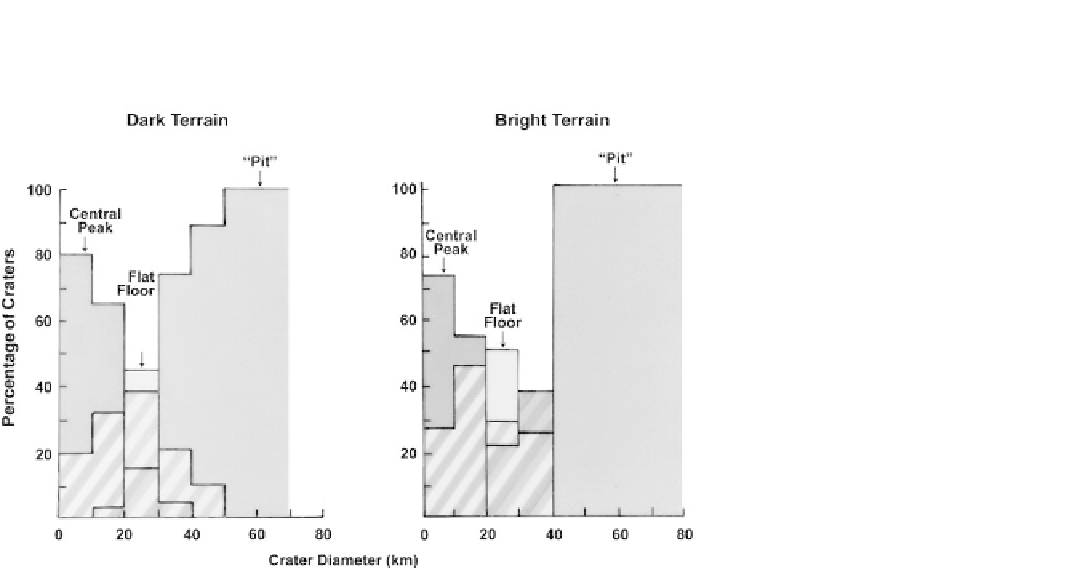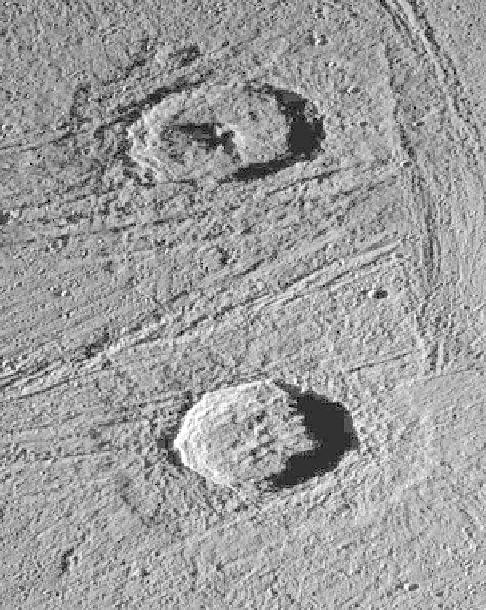Geology Reference
In-Depth Information
Figure 8.31. Size distributions of central-
peak,
at-
oor, and pit craters on
Ganymede for dark and bright terrains
(from Greeley et al.,
1982
)
Figure 8.33. Ganymede
s Enki Catena consists of 13 craters, probably
formed by the breakup of a comet. The craters cross the boundary
between bright and dark terrains; the ejecta deposit surrounding
the craters appears very bright on the bright terrain. The area shown
is 214 km across (NASA Galileo PIA01610).
'
outer parts of the moon might have been warmer) sug-
gest that inward
flow of the asthenosphere would have
been accompanied by brittle failure of the upper icy crust
to produce the furrows.
Some regions of dark terrain show fracture patterns that
can be correlated with the fracture and groove trends seen
in younger bright terrain. This suggests that at least some
of the tectonic deformation leading to the formation of
bright terrain had its initiation in, and was controlled by,
tectonic processes associated with the dark terrain.
Initial analyses of Ganymede
'
s bright terrain following
the Voyager mission suggested tectonic separation of the
ice crust and in
ll by water
Figure 8.32. An oblique view of two fresh impact craters in bright
terrain near the north pole of Ganymede. Gula crater (top, 38 km in
diameter) has a central peak; Achelous crater (32 km in diameter) has
an outer lobate ejecta deposit (NASA Galileo PIA01609).
and in most cases the
“
parent
”
impact cannot be identi-
fied. Individual furrows are tens to hundreds of kilo-
meters long by 5
-
20 km wide. Geophysical models of
large impacts early in Ganymede
'
s history (when the
-
ice mixtures (slush) erupted




